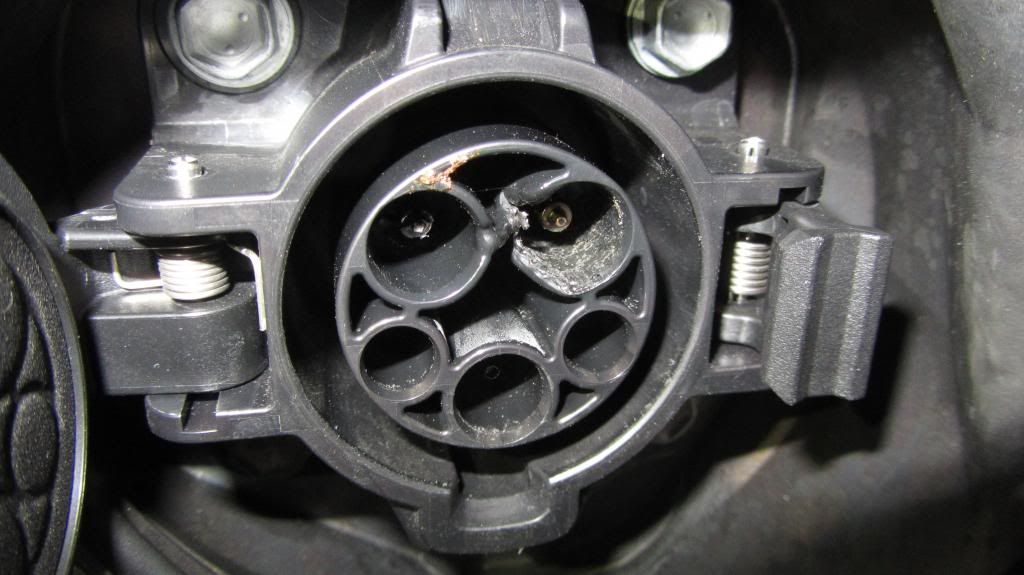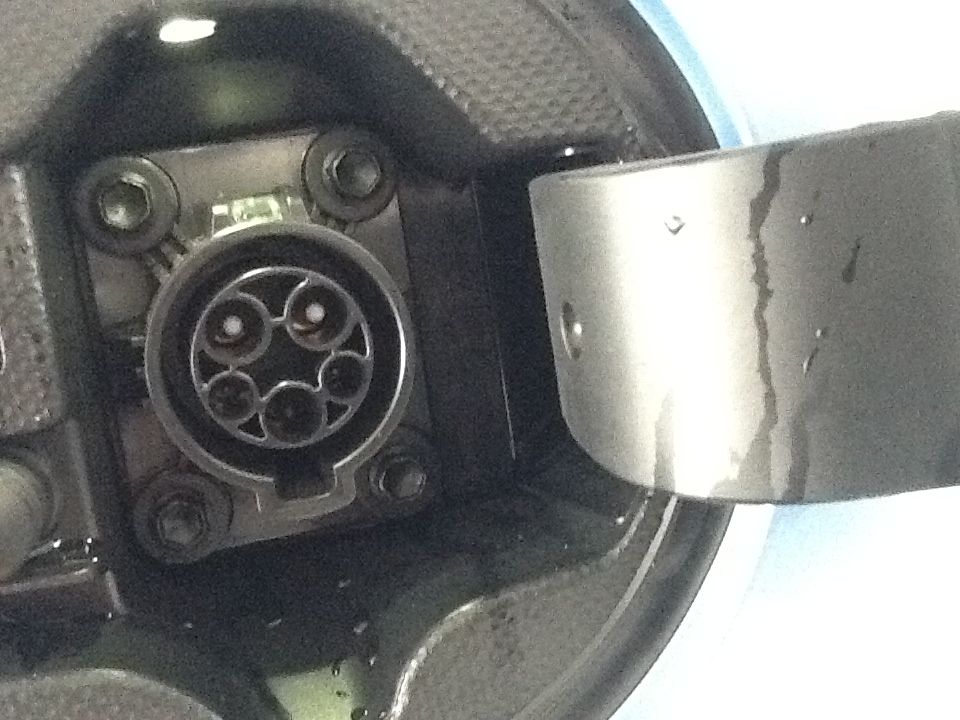Tony I want to thank-you for making this post.
I think the SAE J1772 connector is going to become a bigger issue (especially as these connectors wear out). Also there is another useful form post “J1772 not fitting in socket”
http://www.mynissanleaf.com/viewtopic.php?f=30&t=10390" onclick="window.open(this.href);return false;
As a quick fix it would be nice to have a three foot SAE J1772 extension temperature monitoring cable for the Leaf and other cars that don’t have temperature sensors. In the extension cable each connector should have a NTC thermistor or other temperature sensor, some electronics to measure and disconnect the pilot signal and set a mechanical indicator if either connector gets too hot. I would buy one.
My guess is, we are only seeing the beginning of 30 amp. charger issue (not so much with the 16 amp. like what's in all the 2011 and 2012 Leafs). I think (ultimately) SAE J1772 standard will have to be revised. My own experiences support this issues with the J1772 connector. Several times (only at night) I had to remove my connector and reinsert. My wife, Louise, has had an even more difficult time to get the connector in all the way. (By the way I have four EVSEs, one Blink, one AeroVironment, and two Nissan Panasonics). What I have noticed is, if you don’t get the connector lined up absolutely strait it will stop before it is in all the way. There should be a light because at night as it is difficult (especially in the beginning) to properly line up the connector (that you cannot see) so that it can be inserted completely. What I have seen when my connector was improperly inserted is the car won't start charging (thank goodness as burning up is a worse option). So, I take the connector out and reinsert it and everything is OK. I read in Tony’s posting that Tony had his 12 year daughter plug in it. Probably not the best idea.
Note 1, when I take my Leaf in for service, the service rep. said they inspect the charging connectors. I never though much about this, but now I think Nissan is aware there is an issue here. Also, the Tesla Roster used an earlier version of the standard because Tesla said the current version did not have enough current carrying capability (Mmmm).
Note 2, at work I use the 20 amp. Quick220 and connect the EVSE Upgrade 16 Amp Panasonic charger. I noticed that the 120 VAC 20 Amp. plugs were getting hotter and hotter as the months went by. I used a milliohm meter and found the plugs had 50 milliohm of resistance (too much, dissipating 13 watts each). I went to the hardware store and pick up two Leviton plugs and replaced them. Measured again and the new plugs had 4 to 5 milliohms (much better, about one watt dissipation).




